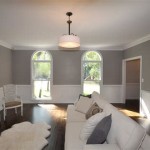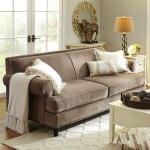Best Type of Flooring For Living Room
The living room, often considered the heart of the home, is a multifaceted space serving as a gathering place for family, an entertainment area for guests, and a relaxation zone for individuals. Given its diverse functions, selecting the appropriate flooring is crucial, impacting both the aesthetic appeal and functional performance of the room. The choice of flooring material involves considering factors such as durability, comfort, style, maintenance requirements, and budget. This article explores several popular flooring options for living rooms, highlighting their key characteristics and suitability for various lifestyles and design preferences.
Hardwood Flooring: Timeless Elegance and Enduring Value
Hardwood flooring is a longstanding favorite among homeowners, renowned for its natural beauty, durability, and timeless appeal. It offers a warm and inviting ambiance that complements a wide range of interior design styles, from traditional to contemporary. The inherent grain patterns and variations in color found in different wood species contribute to the unique character of each floor.
One of the primary advantages of hardwood flooring is its longevity. When properly maintained, a hardwood floor can last for decades, making it a worthwhile investment in the long run. Regular sweeping and occasional mopping are typically sufficient for maintaining cleanliness. Refinishing, a process that involves sanding down the existing finish and applying a new coat, can restore the floor's original luster and extend its lifespan even further. The frequency of refinishing depends on the level of foot traffic and general wear and tear.
Hardwood is available in two primary forms: solid hardwood and engineered hardwood. Solid hardwood consists of planks made from a single piece of wood. It is typically thicker and can be refinished multiple times, making it a more durable option for high-traffic areas. However, solid hardwood is susceptible to changes in humidity and can expand or contract, potentially leading to warping or gapping. Engineered hardwood, on the other hand, is constructed from multiple layers of wood veneer bonded together. This construction provides greater stability and resistance to moisture, making it suitable for installation in basements or other areas with fluctuating humidity levels. While engineered hardwood can be refinished, the number of times it can be sanded is limited by the thickness of the top veneer layer.
Species selection is a crucial aspect of choosing hardwood flooring. Oak is a popular choice due to its affordability, durability, and versatility. Maple offers a lighter, more uniform appearance and is known for its hardness. Cherry is prized for its rich, reddish-brown hue and elegant grain patterns. Exotic species, such as Brazilian cherry or teak, provide unique color variations and exceptional hardness, but they often come with a higher price tag.
The cost of hardwood flooring can vary significantly depending on the species, grade, and installation method. Solid hardwood typically costs more than engineered hardwood, but the long-term value and potential for refinishing may justify the higher initial investment. Professional installation is generally recommended to ensure proper acclimation and prevent issues such as buckling or cracking.
Carpet Flooring: Comfort, Warmth, and Sound Absorption
Carpet flooring offers a soft and comfortable surface underfoot, making it a popular choice for creating a cozy and inviting living room environment. Its inherent insulation properties help to retain heat, contributing to energy efficiency and reducing heating costs. Carpet also provides excellent sound absorption, minimizing noise levels and creating a more peaceful atmosphere.
Carpet is available in a wide range of colors, patterns, and textures, offering homeowners extensive design possibilities. From plush shag carpets to durable berber carpets, there is a style to suit virtually any aesthetic preference. The choice of carpet fiber is a crucial consideration, as it affects the durability, stain resistance, and overall performance of the floor.
Nylon is a synthetic fiber known for its exceptional durability and resistance to wear and tear. It is a popular choice for high-traffic areas and is relatively easy to clean. Polyester is another synthetic fiber that offers good stain resistance and is more affordable than nylon. However, it is not as durable and may be more prone to crushing or matting. Wool is a natural fiber that provides excellent comfort, warmth, and sound absorption. It is naturally stain-resistant and durable, but it is also more expensive than synthetic fibers and may require professional cleaning.
Carpet pile refers to the height and density of the carpet fibers. Higher pile carpets offer a softer and more luxurious feel, but they may be more difficult to clean and maintain. Lower pile carpets are more durable and easier to clean, making them suitable for high-traffic areas or homes with pets. Different pile types, such as loop pile, cut pile, and frieze, offer varying levels of texture and visual interest.
Proper installation is essential for ensuring the longevity and performance of carpet flooring. A quality underlayment, or carpet pad, provides cushioning, reduces noise, and extends the life of the carpet. Professional installation is recommended to ensure that the carpet is properly stretched and secured, preventing wrinkles or bunching. Regular vacuuming is essential for removing dirt and debris, and professional cleaning is recommended every 12 to 18 months to maintain cleanliness and remove stains.
While carpet offers numerous advantages, it is important to consider its potential drawbacks. Carpet can trap allergens and dust mites, making it unsuitable for individuals with allergies or asthma. It is also susceptible to staining and may require more frequent cleaning than other flooring options. Furthermore, carpet may not be the most durable option for high-traffic areas or homes with pets.
Laminate Flooring: Affordable Durability and Realistic Aesthetics
Laminate flooring is a synthetic flooring option that offers an affordable and durable alternative to hardwood or tile. It is constructed from multiple layers of materials, including a high-density fiberboard (HDF) core, a decorative layer that mimics the appearance of wood, stone, or tile, and a protective wear layer that resists scratches, dents, and stains. Laminate flooring is known for its ease of installation, low maintenance requirements, and realistic aesthetics.
One of the primary advantages of laminate flooring is its affordability. It is typically less expensive than hardwood, tile, or natural stone, making it a budget-friendly option for homeowners. Laminate flooring is also relatively easy to install, with many products featuring a click-lock system that allows for DIY installation. However, professional installation is recommended for larger or more complex projects.
The wear layer is a crucial aspect of laminate flooring, as it determines the floor's resistance to scratches, dents, and stains. The thickness of the wear layer is measured in mils, and a thicker wear layer provides greater durability. For high-traffic areas or homes with pets, a laminate floor with a thicker wear layer is recommended.
Laminate flooring is available in a wide range of styles and colors, mimicking the appearance of various wood species, tile patterns, and stone textures. Technological advancements have enabled manufacturers to create highly realistic laminate floors with embossed surfaces and intricate grain patterns. Some laminate floors are even water-resistant or waterproof, making them suitable for installation in kitchens or bathrooms.
Maintaining laminate flooring is relatively simple. Regular sweeping or vacuuming is sufficient for removing dirt and debris, and occasional mopping with a damp cloth is recommended for cleaning spills. Harsh chemicals or abrasive cleaners should be avoided, as they can damage the wear layer. Laminate flooring is generally resistant to staining, but spills should be cleaned up promptly to prevent discoloration.
While laminate flooring offers numerous advantages, it is important to consider its potential drawbacks. Laminate flooring is not as durable as hardwood or tile and may be susceptible to water damage if not properly installed or maintained. It is also not as sound absorbent as carpet and may produce a hollow sound when walked upon. Furthermore, laminate flooring cannot be refinished, so scratches or dents cannot be repaired. However, damaged planks can often be replaced individually.
Vinyl Flooring: Versatile, Waterproof, and Cost-Effective
Vinyl flooring has undergone significant advancements in recent years, evolving from a basic and utilitarian option to a versatile and stylish choice for living rooms and other areas of the home. It is known for its waterproof properties, durability, affordability, and ease of maintenance. Vinyl flooring is available in a variety of formats, including sheet vinyl, vinyl tile, and luxury vinyl plank (LVP).
One of the primary advantages of vinyl flooring is its waterproof nature, making it an ideal choice for areas prone to moisture, such as kitchens, bathrooms, and basements. Vinyl flooring is also highly resistant to stains, scratches, and dents, making it a durable option for high-traffic areas or homes with pets. It is relatively soft and comfortable underfoot, providing a cushioned feel that reduces fatigue.
Sheet vinyl is a large, continuous sheet of vinyl flooring that is typically installed over a subfloor. It provides a seamless surface that is easy to clean and maintain. Vinyl tile is individual squares or rectangles of vinyl flooring that can be arranged in various patterns. LVP is designed to mimic the appearance of hardwood planks and offers a more realistic and upscale look than traditional vinyl flooring. LVP is typically thicker and more durable than sheet vinyl or vinyl tile.
The wear layer is a crucial aspect of vinyl flooring, as it determines the floor's resistance to scratches, stains, and wear and tear. A thicker wear layer provides greater durability and extends the life of the floor. For high-traffic areas or homes with pets, a vinyl floor with a thicker wear layer is recommended.
Vinyl flooring is available in a wide range of colors, patterns, and textures, offering homeowners extensive design possibilities. It can mimic the appearance of wood, stone, tile, or other materials, providing a cost-effective way to achieve the desired look. Vinyl flooring is also relatively easy to install, with many products featuring a click-lock system or peel-and-stick backing.
Maintaining vinyl flooring is simple. Regular sweeping or vacuuming is sufficient for removing dirt and debris, and occasional mopping with a damp cloth is recommended for cleaning spills. Harsh chemicals or abrasive cleaners should be avoided, as they can damage the surface. Vinyl flooring is generally resistant to staining, but spills should be cleaned up promptly to prevent discoloration.
While vinyl flooring offers numerous advantages, it is important to consider its potential drawbacks. Vinyl flooring is not as environmentally friendly as some other flooring options, as it is made from synthetic materials. It is also not as durable as hardwood or tile and may be susceptible to tearing or gouging. Furthermore, vinyl flooring may not be as heat resistant as some other materials and can be damaged by excessive heat.
Tile Flooring: Durable, Water-Resistant, and Stylish
Tile flooring is a durable and versatile option for living rooms, offering a wide range of styles, colors, and textures. It is known for its water resistance, stain resistance, and ease of maintenance. Tile flooring is available in various materials, including ceramic, porcelain, and natural stone.
Ceramic tile is made from clay that is fired at high temperatures, resulting in a hard and durable surface. It is a popular choice for living rooms due to its affordability, versatility, and ease of maintenance. Porcelain tile is a type of ceramic tile that is fired at even higher temperatures, making it denser and more water-resistant. It is often used in high-traffic areas or areas prone to moisture.
Natural stone tile includes materials such as granite, marble, slate, and travertine. It offers a unique and luxurious look, with natural variations in color and pattern. Stone tile is typically more expensive than ceramic or porcelain tile and may require sealing to protect it from stains. It is considered a premium option.
Tile flooring is highly water-resistant, making it suitable for areas prone to moisture. It is also resistant to stains, scratches, and dents, making it a durable option for high-traffic areas or homes with pets. Tile flooring is easy to clean and maintain, requiring only regular sweeping or vacuuming and occasional mopping.
Tile flooring can be installed in various patterns, creating a unique and visually appealing design. It is also compatible with radiant heating systems, providing warmth and comfort underfoot. The grout lines between tiles require regular cleaning and sealing to prevent staining and moisture penetration.
While tile flooring offers numerous advantages, it is important to consider its potential drawbacks. Tile flooring can be cold and hard underfoot, making it less comfortable than carpet or vinyl. It is also more difficult to install than some other flooring options and may require professional installation. Furthermore, tile flooring can be slippery when wet, so caution should be exercised.

Best Flooring Ideas For Your Living Room

What Is The Best Flooring For A Living Room Tarkett

Best Flooring Ideas For Your Living Room

Discover The Best Flooring For Your Living Room Wood And Beyond Blog

The Best Wood Flooring For Living Rooms Ted Todd Fine Floors

Top Living Room Flooring Options Hgtv

9 Best Flooring Types To Consider Vinyl And More Lx Hausys
Best Flooring Ideas For Your Living Room America

Best Flooring Ideas For Your Living Room Factory Liquidators

Elevate Your Home Value Instantly With These Floors Déco Surfaces








